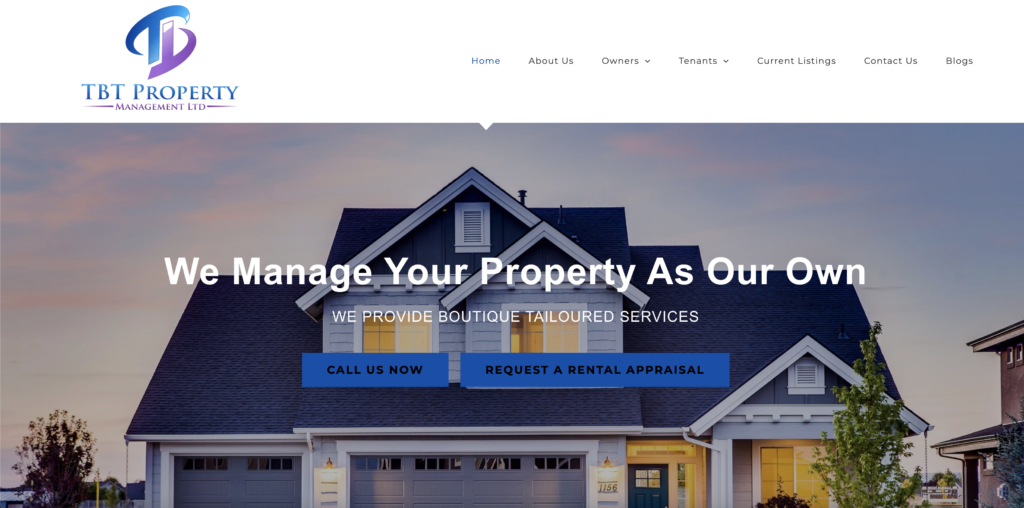
How Do Maintenance Costs Differ for Rental Houses Compared to Other Property Types ?
Every landlord knows that property maintenance is one of the biggest ongoing costs of owning a rental – but not all properties are created equal. Whether you’re renting out a standalone house, a townhouse, or an apartment, the type of property you own has a big impact on how much you’ll spend keeping it in good condition.
In this blog, we’ll break down how maintenance costs differ for different property types in Auckland’s rental market, and how a professional property management company like TBT Property Management can help reduce long-term expenses through smart planning and efficient care.
Understanding the Basics of Rental Maintenance Costs
Maintenance costs are the regular expenses needed to keep a property safe, functional, and compliant. This includes plumbing, electrical, roofing, appliances, heating systems, lawns, and structural upkeep.
While it may seem simple, the total cost depends on factors like property size, age, materials, and whether the property is part of a shared complex or a standalone home.
For Auckland landlords, understanding these differences helps with better budgeting and smarter investment choices.
1. Rental Houses: Higher Independence, Higher Maintenance
Rental houses usually come with more freedom and privacy for tenants — but they also require more upkeep. Because they’re standalone properties, landlords are responsible for everything from the roof to the backyard.
Common Maintenance Costs for Houses:
Roofing and exterior walls – weather exposure means regular painting, roof checks, and gutter cleaning.
Lawn and garden care – mowing, pruning, and tree maintenance are ongoing costs.
Plumbing and electrical repairs – older houses often need periodic updates to meet modern standards.
Fencing and driveways – repairs and resurfacing add to yearly costs.
In Auckland, the average maintenance cost for a standalone house can range between 1% and 3% of the property’s total value annually, depending on its age and size.
Why Landlords Still Prefer Houses:
Higher rental yield due to privacy and space.
Better long-term capital growth.
Attracts stable tenants such as families and professionals.
So, while maintenance costs may be higher, so are the returns — especially when managed efficiently by a property management team that stays ahead of maintenance before problems grow expensive.
2. Townhouses: Shared Costs and Balanced Upkeep
Townhouses offer a balance between independence and convenience. Typically built as multi-level homes within a managed complex, they share some structural components and outdoor areas.
Common Maintenance Costs for Townhouses:
Shared exterior maintenance (often covered by body corporate fees).
Internal maintenance such as plumbing, fixtures, and minor repairs.
Limited landscaping or small courtyards, keeping outdoor costs low.
Townhouses generally cost less to maintain because external repairs and groundskeeping are shared or managed collectively. However, landlords must still budget for body corporate fees, which vary depending on the amenities (such as shared parking or security).
Why Townhouses Are Cost-Effective:
Lower exterior maintenance responsibilities.
Attracts families and small groups seeking modern, easy-living spaces.
Typically newer builds, reducing the need for urgent repairs.
For landlords who want manageable maintenance costs without sacrificing rental demand, townhouses strike an ideal balance.
3. Apartments: Lower Upkeep, But With Ongoing Fees
Apartments are the easiest to maintain but often come with body corporate fees that cover shared areas, elevators, hallways, and building safety systems.
Common Maintenance Costs for Apartments:
Interior repairs like plumbing, lighting, and appliances.
Body corporate levies covering external upkeep, cleaning, and insurance.
Periodic appliance replacements due to higher tenant turnover.
While apartment landlords spend less on traditional maintenance, body corporate costs can add up depending on the building’s amenities, such as pools, gyms, or security systems.
Why Apartments Appeal to Investors:
Lower maintenance responsibility for individual owners.
Strong demand from young professionals, couples, and students.
High rental turnover potential in central Auckland areas.
In short, while the landlord’s direct maintenance burden is lighter, total costs depend heavily on the property’s management structure and shared expenses.
4. The Value of Smart Property Management
Regardless of property type, effective management is key to reducing maintenance costs over time. Regular inspections, proactive repairs, and trustworthy tradespeople make all the difference.
That’s where TBT Property Management comes in.
As one of Auckland’s leading rental property management companies, TBT Property Management ensures your property is well cared for year-round. Our team schedules timely inspections, addresses minor issues before they escalate, and works with trusted contractors to keep costs transparent and reasonable.
We manage every type of property — from standalone houses in Manurewa and Papakura to modern apartments in Auckland City Centre — helping landlords protect their investment while keeping tenants happy and secure.
Let TBT Property Management Handle the Hard Work
Managing a rental property doesn’t have to be stressful. Whether you own a family home in Papatoetoe or an apartment in Grafton, TBT Property Management takes care of the details — from tenant screening to regular maintenance oversight.
We understand the Auckland market inside out and know how to keep your property performing at its best while keeping costs under control.
Looking to reduce your maintenance expenses and improve your rental returns?
Contact TBT Property Management Today ! to learn how we can manage your property efficiently and cost-effectively.
TBT Property Management – We Manage Your Property As Our Own.